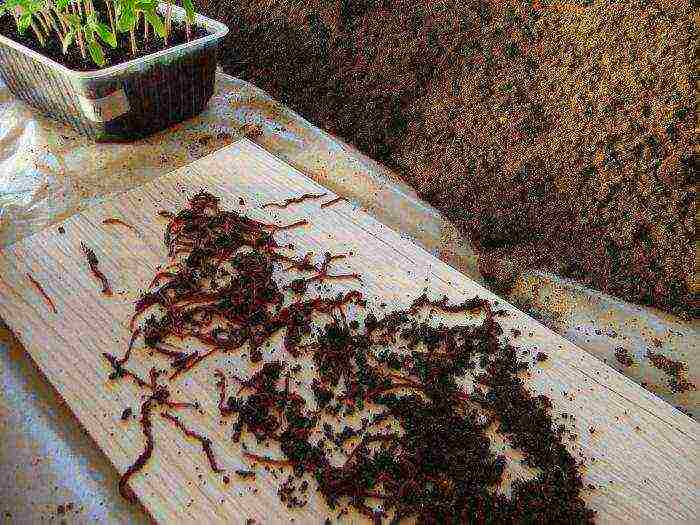Content
- 1 Types of earthworms
- 2 Worm business
- 3 Using vermicompost
- 4 Main economy
- 5 Real pluses
- 6 Breeding
- 7 Vegetable garden
- 8 Industrial volumes
- 9 Some technical points
- 10 Conclusion
- 11 Where to breed California worms?
- 12 Features of the content of California worms
- 13 Features of the sale of California worms
- 14 How profitable is the business?
- 15 Breeding a California worm in the country
- 16 Biological features of the California red worm (CCW)
- 17 Necessary substrate and its preparation
- 18 Rules for keeping "Californians"
- 19 Features of the sale of "live products"
Numerous fishing enthusiasts are well aware of such an indispensable attribute of their hobby as red Californian worms, but even the most avid of them do not always know what exactly is the name of what they use as bait. Moreover, they do not suspect that they can be used not only in this capacity, but also in at least several others.
Types of earthworms
To begin with, worms are the most abundant invertebrate species on the entire planet, and their habitat does not include except perhaps Antarctica. In fact, there are a huge variety of their types and subspecies. Biologists distinguish three main categories, depending on the behavior of worms in their natural environment. These are Anecic, Endogeic and Epigeic.
The first species "prefers" to exist on the surface of the ground, and these worms dig holes in depth, usually vertically downward. The main food for this species is organic matter, which they process into humus. This category is characterized by an instant extinction of activity and the ability to reproduce when moving from a familiar habitat to any other, including an artificial one, which, for example, is necessary when breeding them. This variety plays a critical role in soil formation, and its practical use is limited to natural soil formation without human intervention. Plus anglers use it as bait.
The second type "prefers" more mineralized soil, in which there is much less organic matter. Worms of this category dig horizontal holes, do not like the surface and need constant processing of the soil. Thus, they saturate the earth with various nutrients, enriching it for further use by vegetation, and also increase the oxygen content in it. The use of this species of earthworms is also largely uncontrolled and mostly natural.
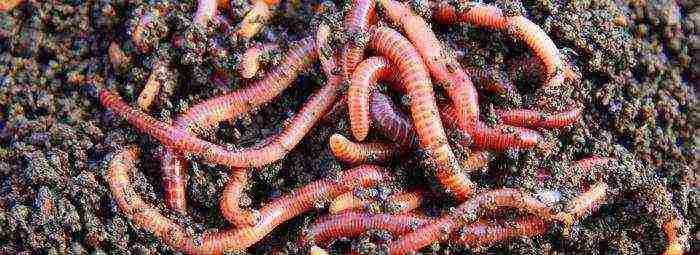 The third type is the one that will be discussed in the article, since it is the Californian worms, as they are also called, that can safely tolerate artificial living conditions, and their use has specific economic benefits. This variety prefers the top layer of the soil for life, and, to be more precise, all kinds of organic matter, which it is so rich in. These are leaves, the remains of trees, bark, and so on. Californian worms do not dig deep and branched systems of passages.
The third type is the one that will be discussed in the article, since it is the Californian worms, as they are also called, that can safely tolerate artificial living conditions, and their use has specific economic benefits. This variety prefers the top layer of the soil for life, and, to be more precise, all kinds of organic matter, which it is so rich in. These are leaves, the remains of trees, bark, and so on. Californian worms do not dig deep and branched systems of passages.
The popularity of this species from an economic point of view is due to the possibility of its breeding in artificial habitats. The main factor is only the availability of a sufficient amount of organic material, which is quite easy to implement, as well as the absence of the need to use a deep layer of soil. Breeding California worms comes with a number of important technical points to consider.
Worm business
To understand the basics of worm breeding, it is necessary to give several definitions that are used by professionals in this field of activity.
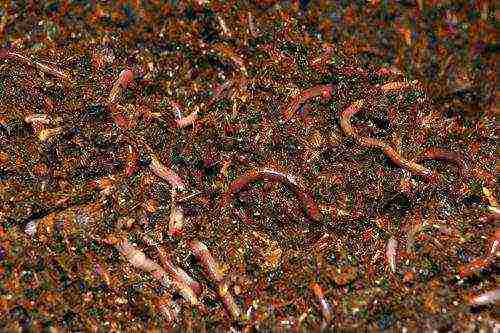 Compost is a fertilizer obtained from organic waste as a result of their decomposition with the direct participation of microorganisms. The most common sources for its manufacture are peat, manure, bird droppings, foliage and a variety of garden waste.
Compost is a fertilizer obtained from organic waste as a result of their decomposition with the direct participation of microorganisms. The most common sources for its manufacture are peat, manure, bird droppings, foliage and a variety of garden waste.
Vermicompost, or vermicompost, is a product of compost processing by earthworms, bacteria and some other organisms. In particular, Californian worms can be used as a result of certain breeding work to improve the overall quality of the fertilizer produced at the output of the production activity.
Vermicompost production is the main driving force behind the worm farming business, as this product is in demand. Moreover, not only within the domestic segment of agricultural activity, but even abroad, which should also be thought about when preparing plans for the development of one's own business in this area. And although such a business may include the very distribution of worms and their cocoons as a completely self-sufficient part of it, vermicompost is the most profitable investment.
Using vermicompost
The most common application of this fertilizer is associated with the cultivation of various vegetable crops. This applies not only to greenhouse forms such as tomatoes or cucumbers, but also to potatoes. The yield increase achieved with the use of vermicompost reaches 40%. Vermicompost is also extremely effective in growing strawberries, wild strawberries and other types of berries cultivated in different regions. At the same time, they are characterized by an increase in yield up to 60%. It is obvious that the use of this fertilizer is in good demand, which means that it can be easily sold and earned on it.
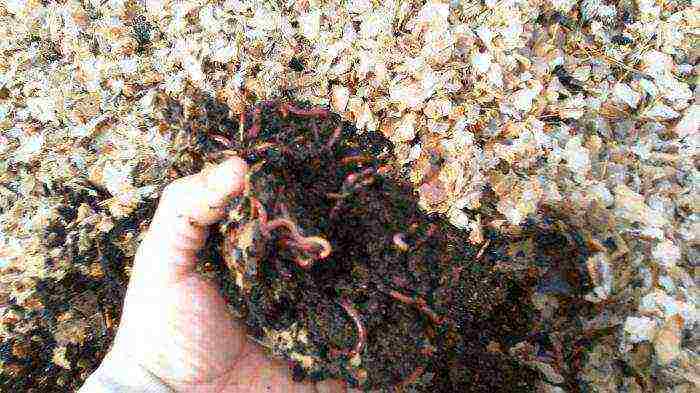
We shouldn't forget about the rich importers of vermicompost. For example, the countries of the Arab world, in particular the UAE, widely use vermicompost for growing various crops, collecting up to three harvests per season. That being said, they pay well for quality vermicompost. So, the cost of one ton of products fluctuates in the range of 2 thousand dollars. In Europe, vermicompost is bought for 600 euros, which also looks very attractive. In Russia, these products are not so valuable, for example, a 40-liter package costs about 400 rubles. That is, with a competent approach to advertising and sales, you can still earn by selling vermicompost. However, to get into this market, you will have to work hard and not only earn a good name, but also create a truly effective production structure.
Main economy
Since the article deals with the cultivation of the California worm, you should know the main advantages of its use from an economic point of view. And although there is an opinion among the people about the incredible characteristics of this variety, this should not be done. Advertising in this area is really pumping the numbers to incredible proportions. Californian red worms are reported to live up to 15-16 years old, which is a common misconception. In fact, the lifespan of individuals does not differ much from that of their domestic relatives, making up a period of 5-6 years.
California worms supposedly exist in temperatures ranging from 2 to 40 degrees. This is also not true, their activity practically disappears already at 35 degrees, not to mention the fact that at 4 degrees they begin to die. In general, all advertising gimmicks are fairly obvious. Despite all this, the Californian worm still has some advantages over its domestic counterparts, so it is profitable to buy it specifically to create your own business.
Real pluses
Among the widely advertised advantages that really take place, one can mention activity even in the winter season, which cannot be said about the rain species, as well as the compactness of the populations that California worms prefer to live with (by the way, their photos can be seen at the beginning of the review).
In addition, it is necessary to note the higher level of reproduction of this species in comparison with the usual one. And although there is also an advertising exaggeration here, the numbers are named almost dozens of times, in fact, this figure is somewhere in one and a half to two times higher. So California worms still have obvious advantages, which determines the choice of many zealous owners.
Breeding
The breeding process can be considered in two main forms: in industrial, when it is necessary to work with a large number of individuals, and at home, when an ordinary garden plot can also become a source of good income.
Breeding Californian worms implies the correct organization of activities and following certain directions. Consider the main points of creating your own business, first within a garden plot, and then in an industrial setting.
Vegetable garden
The California worm is purchased in the form of either adults, or fry, or in cocoons, depending on the season, financial possibilities, etc. On the garden plot, it is necessary to prepare a square pit meter by meter and a depth of about 70 cm. So that the worms do not go to master the expanses of the garden partnership, you should tamp its lower surface and cover the walls with boards. The nutrient medium, or, as it is also called, the substrate with worms, is thrown into the pit and carefully leveled with a pitchfork. Then a layer of simple substrate is added. To obtain vermicompost, it is necessary to carry out the so-called extraction of worms.
Naturally, several weeks must pass before obtaining vermicompost of normal quality for the worms to process the nutrient medium. The hood is the addition of a substrate layer on top, its thorough loosening, after which the worms crawl into this upper layer. Next, you need to carefully remove this layer, saturated with them, and transfer it to a new pit to continue the cycle of creating vermicompost. The average drawing time is about three to four weeks.
The resulting layer of recycled compost is sieved, dried, after which it can be sold at a price that an enterprising businessman will be able to negotiate with the fertilizer customer. Well, the worms continue their labor activity in the next pit, performing the cycle of developing new products. This is how California worms are mainly used at home.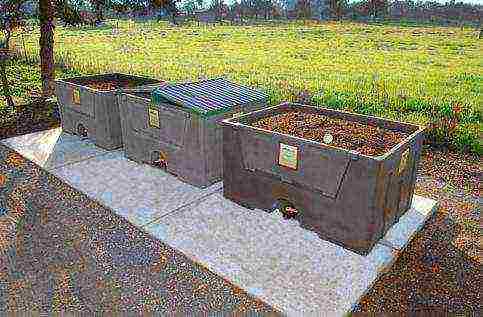
Another important point is the manufacture of the substrate. The waste at hand is shredded. This can be paper, straw, haulm or any other organic filler. The resulting mass is located near the pit and watered with liquid manure. The humidity to be created is about 80%. Checking whether this mass is sufficiently moist is very simple. If the nearby worms do not crawl into it, you must continue to water. The substrate must be loosened every two weeks.
From the point of view of small investments in business, it is the California worm that is convenient. Breeding at home does not require serious investments, you just need a sufficient amount of patience and interest in this matter, because, obviously, you have to deal with creatures swarming in the ground and in the presence of not very pleasant smells. In any case, this is a job for true enthusiasts.
Industrial volumes
If we are talking about a professional approach to how to breed a California worm, then there are certain nuances. In the previous section, we talked about the number of individuals in 10-20 thousand pieces. When it comes to the volume of a million worms, the approach is somewhat different.
This requires from 10 to 15 sq. meters of area indoors. The temperature that must be maintained is in the range of 15 to 30 degrees Celsius. Natural ventilation and artificial lighting will be required, plus water supply, preferably non-domestic, since chlorinated water can destroy the entire population. Well or river water is quite suitable.
Careful attention should be paid to protecting the premises from rodents, which can easily destroy a significant part of the colony. That is, you will need a hard floor covering, as well as walls. The height of the mother liquor should be from two to two and a half meters. Breeding California worms as a business is an activity that requires the same careful preparation as any high-tech field.
You will also need to purchase racks on which trays with colonies of worms will be located. It is best to use perforated plastic boxes to provide the required oxygen level and easy drainage of excess liquid. In each tray, a population density of up to 20 thousand individuals should be planned.
To make a substrate in a closed room, it is necessary to spread manure or planned organic waste with a layer of 20 cm and cover with foil. The temperature should be around 55 degrees Celsius. After a day, the resulting mass must be brought to 30 degrees and moistened to 80%. The resulting substrate is laid out in boxes with a layer of 5 cm. At the same time, you should remember about good ventilation in order to remove the formed gases from the room.
The next stage is the habituation of the worms to a new climate for them, and then to the substrate. New formula boxes are placed on top of the worm trays. The next step is simply maintaining the optimum moisture level in the trays. When the worms process the substrate, the resulting vermicompost is separated, dried, sieved and sold to customers.
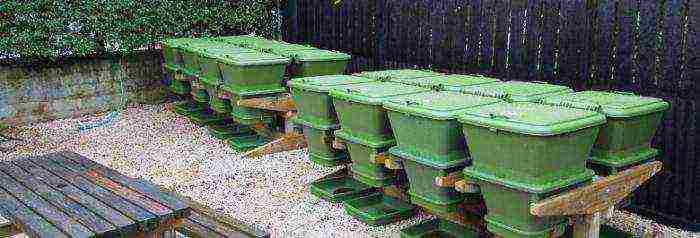
Thus, the red Californian worm, the breeding of which can be put on stream, can bring a decent income to the enterprising villager.
Some technical points
The issues discussed in the article quite generally reveal an area that has decent technology, not adhering to which means easily ruining painstaking work for many weeks. The main driving force behind the business is the California worms. How to breed them is a whole layer of technology that a beginner should know, adjusting environmental conditions to the unpretentious needs of their "workers". However, there are a couple more important questions. For example, what are California worm cocoons and where can I get them?
In fact, the worms lay their eggs immediately after mating. Of course, this is very different from the system used, for example, by birds, but the principle is similar. The worms copulate, after which they form a so-called cocoon in the body, which is separated and then, when opened, can contain from one to five small individuals.
There are specialized agricultural firms supplying this biomass. By the way, within the framework of your own business on worms, you can create an offshoot of the activity of breeding cocoons. For this, there is a separate technology that an entrepreneur can also take note of and master.
The convenience of using cocoons in the worm business is due to obvious conditions. The most important thing is transportation, and from a breeding point of view, also the value of this product. Therefore, this feature of the reproduction of worms should also be paid attention to when designing your own business related to their breeding.
Conclusion
As mentioned, there is some advertising euphoria associated with the incredible qualities that Californian worms allegedly possess. Public reviews vary widely: from laudatory to derogatory.However, obviously, there are certain advantages of this type of worms over the same earthworms, especially from the point of view of creating your own business for breeding them. Good reproducibility, unpretentiousness, improving the quality of fertilizers, in the creation of which they take the most important part, is not a complete list of advantages.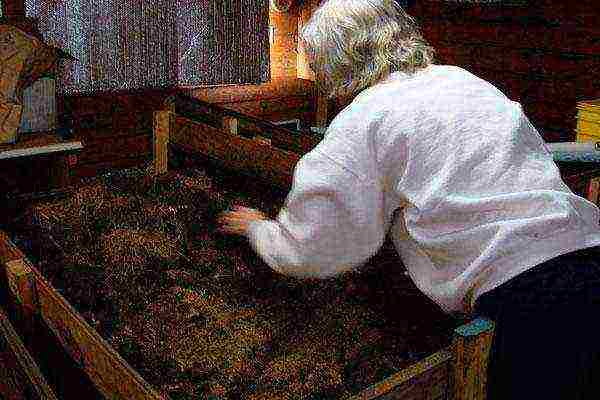
In addition, there are at least several aspects of the use of California worms. First, it is actually the creation of vermicompost as the most valuable and demanded product in the modern agricultural market. Moreover, the demand for it has continued to grow steadily over the past few years. With the increase in production capacity, new opportunities for implementation will appear. So, already now the Arab Emirates are buying vermicompost for fabulous money. Of course, you will have to work hard for this, but if an entrepreneur has a desire to produce in this area, then entering the international market is quite real.
Secondly, such a business, obviously, will increase the number of worms on a makeshift farm, if, again, the owner will strictly follow the technology. This means that it is possible to sell the "manufacturer" itself, without reducing their capacities, but, on the contrary, increasing the number and improving their living conditions.
Thirdly, you can deal with the supply of so-called cocoons, that is, the offspring of the population. And this is another effective way to make money in the field of worm breeding.
In general, this activity requires not only careful planning, but also a certain amount of enthusiasm and desire to tinker with manure and other, to put it mildly, not the most fragrant substances. So business is unusual and for a certain circle of people it can become a source of good stable income and a way of self-expression in attempts to make this world a little better. In addition, it does not require much investment. Of course, the size of the initial investment depends on the size of the entrepreneur, but, as a rule, at first, a thousand dollars will be more than enough to start a business.
Not having an impressive investment at their disposal, entrepreneurs are trying to start a business to choose those ideas that require a minimum of funds. And there are plenty of such options - for example, breeding California worms at home. Having organized a vermi farm (this is how such a "farm" will be called), you can start earning decent sums without special skills, because worms are in demand on the market. The advantages also include the simple technology of their breeding. California worms are used as bait for fishing, as food for birds and fish, as a useful fertilizer for growing fruit crops and vegetables.
Our business valuation:
Initial investment - from 5000 rubles.
Market saturation is medium.
The complexity of starting a business is 3/10.
Cultivation of Californian worms, if you create optimal conditions for growth for the “pets” and correctly organize the marketing process, will very soon reach the break-even point, starting to bring consistently high profits. And in order to minimize financial markets, it is worth starting small - with a homemade worm farm. And over time, when things go uphill and there is a wide range of regular customers, you can invest in the large-scale production of the California worm. In this case, the costs will be much higher, but they will quickly pay off.
How to breed California worms? Consider what funds an entrepreneur will have to use to organize a profitable business.
Where to breed California worms?
What is good about this direction is that the entrepreneur will not need large areas.It's great if the property has its own suburban area or a house with a cellar - then all problems will be solved, since this is where you can start your business.
The technology of organizing a worm farm allows you to grow worms in 2 ways:
- On open air.
- Indoors.
If the worms are bred in the country in an open area, then the business will be more seasonal in nature, since the individuals cannot withstand severe cold weather, which means that activities will have to be suspended until spring. But keeping the worms indoors (in the same cellar or shed) in compliance with optimal temperature conditions, you can conduct your business all year round.
If you are going to launch a vermi farm in an open area, it is necessary to carefully fence off the involved area, and even better - to partially concreted the adjacent area. Otherwise, the invasion of pests (for example, moles) cannot be avoided.
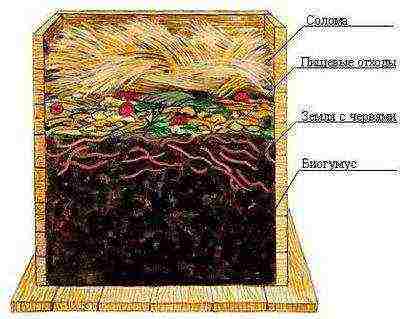 To be able to breed and sell Californian worms, you will need to prepare them "at home". For this, wooden boxes or a plastic container can be used. The containers can be of different sizes, but in height it is better to keep the range of 30-40 cm. In order not to waste extra money, the boxes can be made from strong boards yourself. And many people in their dachas have large plastic barrels idle, which can be cut in half and used for their own purposes.
To be able to breed and sell Californian worms, you will need to prepare them "at home". For this, wooden boxes or a plastic container can be used. The containers can be of different sizes, but in height it is better to keep the range of 30-40 cm. In order not to waste extra money, the boxes can be made from strong boards yourself. And many people in their dachas have large plastic barrels idle, which can be cut in half and used for their own purposes.
After the containers are prepared, it is necessary to fill them with a nutrient substrate so that the worms are kept in accordance with all the rules. So what and how to grow California worms? A layer of soil with healthy individuals is laid at the bottom of the box. And so that they have something to eat, a substrate is laid on top, which can consist of humus, food waste, manure, rotten foliage. Thus, optimal conditions for growth and development are created for the worms - they are warm and satisfying here.
It should be ensured that there are no metal inclusions in the earth layer. This can negatively affect the fertility of individuals.
And when the worms are "populated" in the boxes, you need to provide them with proper care - feeding and optimal temperature.
Interesting articles:
Breeding grape snails in the country as a way to make money.
How to open your own crayfish farm.
How can you make money in the village?
Features of the content of California worms
An important question to decide in advance is where you can buy California worms. If you buy low-quality "planting material", all the efforts of an entrepreneur may be in vain - he will not receive the expected increase. And they get worms on the same worm farms. When making a deal, you need to make sure that all individuals are exactly red and actively move.
Practice shows that the broodstock should be more than 1500 healthy individuals. It will take 1-3 families to "populate" 1 m3 of soil. The wholesale cost of 1 worm is 1-3 rubles.
California worms are attractive as a business, primarily for their simple farming technology. In short, the main steps are as follows:
- "Settling" of the livestock in a box with a substrate.
- Processing by individuals of compost into nutritious vermicompost.
- Reproduction of individuals.
- Collection of humus, worm tea, live individuals for the purpose of further sale.
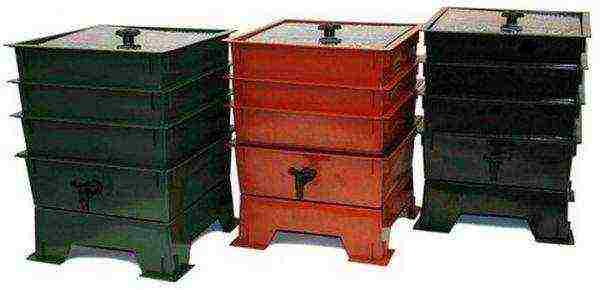
And in order for the California worm for fishing to actively breed, it is necessary to maintain the optimum temperature within + 15 ... + 25 ˚C. But individuals can withstand lower temperatures. The acidity of the soil should be 7 pH, and the humidity of the air should be 75-80%. You can also highlight some of the nuances that should be observed when deciding to put the case on stream:
- It is better to cover the top of the box with a lid, hay or burlap.
- Twice a week, the soil should be loosened to allow oxygen to reach the deep layers of the soil.
- If the temperature drops to -5 ˚C, the compost is additionally covered with a layer of manure and straw.The height of such an insulating layer should be at least 100 cm.
- If individuals are lethargic and do not hide from harsh light, they need to be transferred to a new substrate.
And what to feed the California worms? It will not require special costs, since individuals can, in the literal sense of the word, eat leftovers from the table - used tea leaves, soaked in paper, food leftovers. Cow and pork manure for feeding can be used only after six months after receiving it (but not later than 2 years), but rabbit or goat manure - immediately. The soil with worms should be watered occasionally using a watering can.
How often the worms are fed depends on the number of individuals, the season and the type of food. On average, the nutrient substrate is renewed every 1.5-2 weeks.
Read more:
Making expanded clay concrete blocks with your own hands as a business.
How to organize an egg powder production line.
How to open a plant for the production of dry building mixtures.
Features of the sale of California worms
Selling California worms in bulk will bring the entrepreneur much more profit than selling individuals to retail customers. Taking this into account, the first thing to do is to establish contacts with permanent 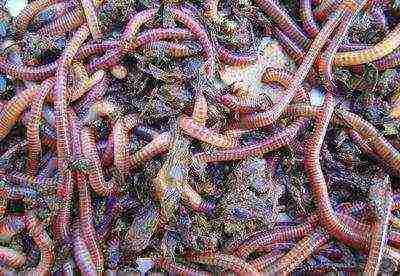 large clients.
large clients.
And since the business involves the sale of not only the worms themselves, but also those waste products that they form, the following buyers may be interested in the vermifarm:
- private summer residents and fishermen,
- farms,
- pet shops,
- fishing goods stores.
- fish farms.
And since the price of the California worm and related products is low, many transactions will be carried out in bulk, which will only increase the entrepreneur's income. And in order for as many customers as possible to learn about the vermi farm operating nearby, you should take care of its advertising.
What marketing methods can you use here?
- Direct sales.
- Advertisements on the Internet, newspapers and on fences.
- Flyers.
How profitable is the business?
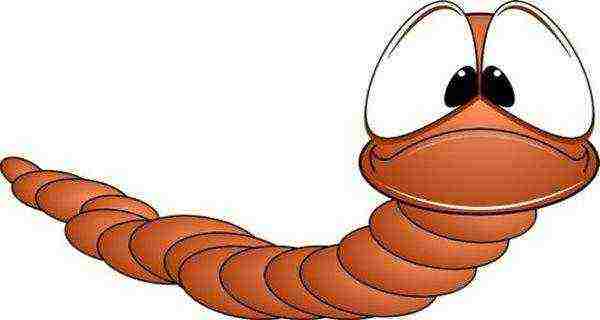
Knowing where to buy California worms for breeding and how to organize the process itself, you can start earning very soon. The purchase of breeding stock will take no more than 5,000 rubles. And if you do not take into account the boxes that will be required, then this is all the costs of the business, since the worms do not need any special feed.
You can start small - by selling natural fertilizers and live worms to your neighbors. And when the vermi farm expands, it will be possible to think about entering larger sales markets.
It is rather difficult to calculate the exact income that the “farm” will bring. But you can still catch the main economic trend, if you take into account how much the red Californian worm costs - and this is about 1-3 rubles / piece. Note that the amount from sales will be almost entirely the net profit received by the entrepreneur, since large variable costs are not expected here.
Breeding a California worm in the country
In previous materials, we have already touched upon the topic of producing vermicompost in the country with our own hands, if last time we talked about worms prospectors and earthworms, then today I want to say a few words about California worms. It is not difficult to guess from the name of the origin of this worm; in the middle of the last century, American biologists set themselves the task of developing a breed of worms with the highest possible characteristics, by crossing various breeds of earthworms, and a breed of red California worms was obtained. This worm is capable of producing humus twice its own weight per day, while during the season from a small group of worms - 40-50 individuals, you can get offspring two orders of magnitude more, while the Californian worm lives on average fifteen years! You will learn more about breeding this breed of worm by watching the video tutorial below.
Breeding and keeping of worms
A safe and healthy fertilizer comes not only from organic residues. California worms are producers of vermicompost, and it is not difficult to grow them at home. This is a profitable business, since only organic waste is needed to breed it, and it multiplies quite quickly.
Biological features of the California red worm (CCW)
Due to their unpretentiousness and rapid reproduction, Californian worms have become widely used in the production of vermicompost. They are characterized by the following features:
- the habitat is an organic substrate,
- life expectancy is 16 years, per season, an individual is able to lay up to 20 cocoons,
- gluttonous: eats food more than its weight per day,
- lives in a container where he is bred without leaving it,
- temperature differences, in which the "underground inhabitant" can exist, ranges from +4 to + 40C.
Any earthworms, passing the soil through the intestines, enrich it with useful components. Californian earthworms produce vermicompost in a short period of time, which makes them different from ordinary earthworms (they look very similar in appearance).
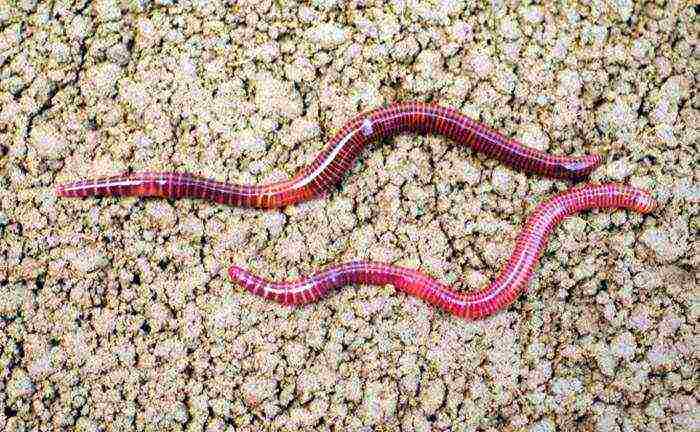 California worms
California worms
The substrate enriched with them has a number of positive qualities:
- contains a large number of beneficial soil microorganisms,
- the amount of humic acids increases significantly,
- there are biostimulants that have a positive effect on the growth of crops,
- the number of useful nutrients increases several times.
In connection with the peculiarities of the cultivation of KKCh as producers of vermicompost, the term “vermiculture»- culture of growing worms. On an industrial scale or at home, they can be profitable.
It is enough to populate from 1500 to 3000 individuals in the compost, so that in a year they will process the substrate into biogmus, which will "ennoble" 3-4 acres of land. When creating favorable conditions for the population of worms, during the warm season, they produce up to 2 tons of high-quality humus.
For information: Growing a "Californian" is a profitable business: the costs for it are small and do not need huge areas. Without particularly complex skills, you can get a good income. Worms are needed not only as producers of vermicompost. They are used for catching fish, as food for birds and fish.
Necessary substrate and its preparation
Breeding California worms at home requires a prepared area (place) where they will live. These can be crates or containers, compost pits or heaps. Boxes are used cardboard (inside with polyethylene), wooden, plastic. Convenient to use plastic containers.
Any organic waste is used as feed:
- fruit, vegetable, potato peelings,
- old tea leaves or thick coffee
- bread crusts or moldy bread,
- vegetable waste, tops of plants,
- food leftovers,
- grass and leaf litter.
Meat waste is absolutely not suitable for feeding the worms. Any cleaning must be finely crushed, well crushed, otherwise the worms will not be able to process them.
For information: You can grow worms both outdoors or indoors. Breeding in an open area is seasonal in nature, since the KKCh is not able to withstand the cold climate. In room culture, vermiculture can be grown all year round.
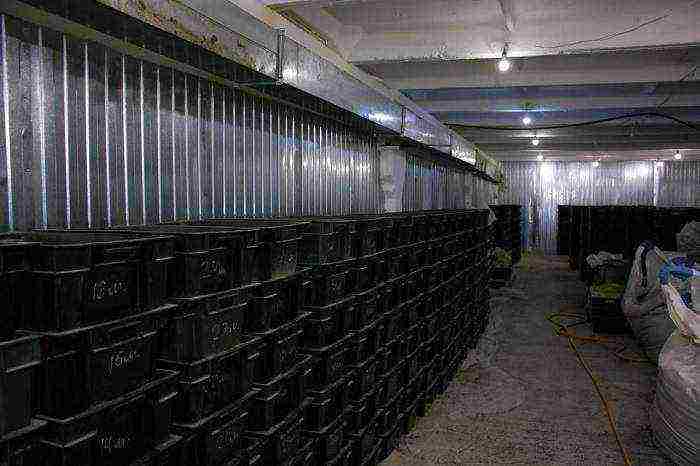 California Worm Breeding Containers
California Worm Breeding Containers
Using containers
Sequence of work when using containers:
- Pour dry sand at the bottom as drainage. Place a container with holes on top.
- Pour fertile soil into the second container with a thin layer of 1 cm, and on top we place food substrate with a layer of 3-5 cm.
- Add crushed eggshells to deacidify the soil, a 1cm layer of earth and moisten the substrate. Water regularly with a watering can.
- We distribute the worms over the surface, covering with a small piece of polyethylene or burlap.
The volume of the container may be different, but the height should be 30-40cm. First, the worms feed and process the substrate in the lower container. We take it out and put a new one on top, with a fresh substrate, where earthen individuals gradually crawl. Gradually changing containers, we get nutrient-rich vermicompost.
It is necessary to select vermicompost from the container three times (in a week), while the worms crawl into the container with fresh substrate. Then the lower layer of vermicompost is poured out, but some individuals still remain in it (up to 5%).
They feed on substances that enter the soil with water flowing down from the upper tiers during irrigation. They can be used with formula. And even if the worms get into the flower pot, then nothing threatens the room culture.
Important: After the sand at the bottom becomes wet, we change it to dry. Boxes or containers must not contain metal staples or nails. Their presence badly affects the fertility of the "Californian".
In boxes, the substrate is prepared in much the same way: a layer of sand and food waste with eggshells, the top layer of soil. When grown in separate containers, it is more difficult to separate the vermicompost processed from the substrate. Usually the worms are kept "on dry rations" for several days, and then food is placed nearby, to which they crawl. The boxes are convenient for keeping "pets" in winter, and in the spring they can be released to the site to improve the soil in natural conditions.
Important: Californian worms can hibernate in areas with warm winters. At temperatures below + 4C, they fall into suspended animation (inhibited state), and in severe frosts, they die. If kept in a compost pit, cover them on top with a compost layer of 40-50 cm. When it gets colder, add more snow on top of the pile.
Rules for keeping "Californians"
We start breeding California worms with their purchase. You can buy them at vermi farms. Healthy individuals are red and move actively. When buying weak worms, you can not get either vermicompost or an increase in individuals.
The price of one individual is approximately 1-3 rubles. At 1 sq.m. soil needs 1-3 families. If worms are needed for reproduction, then the "uterine livestock" is up to 1500 healthy CCC and more. Highlights of the technology on how to breed Californian worms at home:
- settlement of worms in a new habitat,
- the formation of nutritious biohumus by earthen individuals,
- breeding process,
- collection of humus and spawning worms for sale.
For active reproduction, in order for individuals to reproduce well, a temperature regime of +15 to + 25C is needed. The soil should be neutral, and the air humidity should be 75-80%.
The frequency of feeding is directly related to the number of individuals, the quality of the substrate and the season. On average, fresh ingredients are added to the substrate every 2 weeks. You cannot add a lot of food at a time, due to this, fermentation or a change in the acidity of the soil mixture may occur. In an acidic environment, worms die.
Food should be added as the previous portion is processed. Periodically, it is necessary to add an earthen mixture, crushed eggshells (reduces acidity) and sand to the substrate, which improves the digestion processes of the CCC.
For information: Introducing a new diet into the diet of "Californians" should be done carefully. With a quick transition to a new food, mature individuals die, and the young gradually get used to the new diet. It should be introduced gradually (about 10%), mixing with the food that is familiar to them.
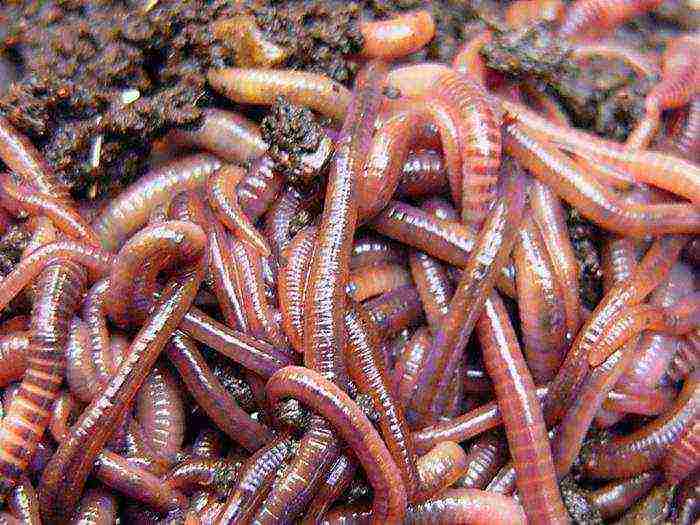 California worms
California worms
How to breed California worms in the country
For them, a compost pit is created on the site, lined with polyethylene, where the "underground inhabitants" are placed. Before frost, they need to be constantly fed, removing the top layer and adding a new one.Some part can be released into the soil to fertilize your site.
If there is no rain, moisten the pits with watering from a watering can. Over the summer, they will multiply well, but when the temperature drops, they will hibernate. This is not scary, in the spring they become more active, and will need enhanced nutrition. Therefore, you should take care of a fresh substrate from the fall.
When growing "underground inhabitants" do not forget about the following nuances:
- Close the box with California worms with a lid, hay or burlap.
- The soil needs to be moistened and loosened twice a week: air and moisture must freely penetrate into the soil.
- If the temperature drops to -5C, then we additionally insulate the box with straw (layer up to 100cm).
- If the worms become lethargic, then the substrate is changed to fresh.
Californians don't like humidity fluctuations or drops. When grown using plant residues, there will be no problems: they contain a lot of moisture. With a different diet, regularly moisten the substrate, excess moisture will drain into the lower layer of sand. If the substrate is squeezed in a fist, moisture flows from it: this is the substrate that our “underground inhabitants” need.
For information: Excess water, passing through the layer of vermicompost, is enriched with nutrients. This is a valuable product with macro- and microelements, humic acids, which is called vermicai. It is useful for watering flowers and seedlings.
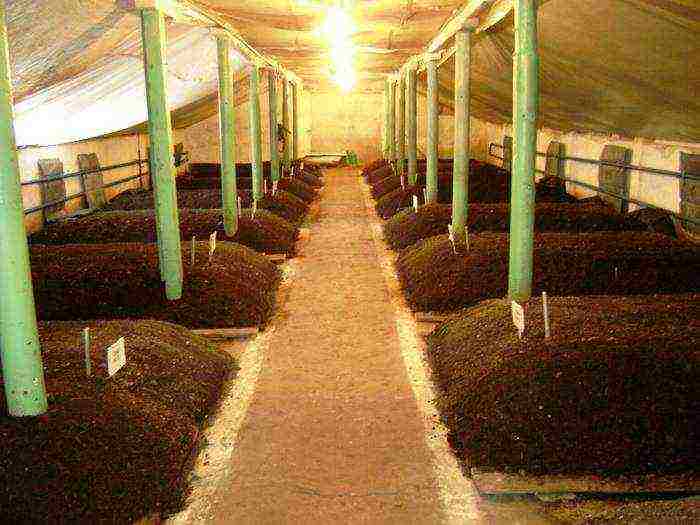
Features of the sale of "live products"
Wholesale is more profitable than retail because the price per worm is low. Therefore, it is advisable to establish contacts with large suppliers. Usually they sell both worms and vermicompost. Pet shops and farms, fish farms, shops of goods for fishing may be interested in these products.
You need to be able to advertise "live goods" and products of its vital activity, printing flyers, creating advertisements on the Internet and posting them in specific places, organize deliveries directly.
Since the costs of organizing the production itself are relatively small (buying worms and containers), and there is no need to buy feed, it is always “at hand”, the first profit will not be long in coming. First, you can sell "Californians" to neighbors and friends, and then, with a good start, look for larger markets.
The amount from sales is a net profit, because the production itself is not costly. So try to create a business from scratch. Having studied the necessary literature, received practical advice from the Internet or from knowledgeable people and having suitable conditions, it will not be difficult. The main thing is to have time and desire to work.
Growing a "Californian" is a profitable business: the costs for it are small and do not need huge areas.
Video of home breeding of California worms:
